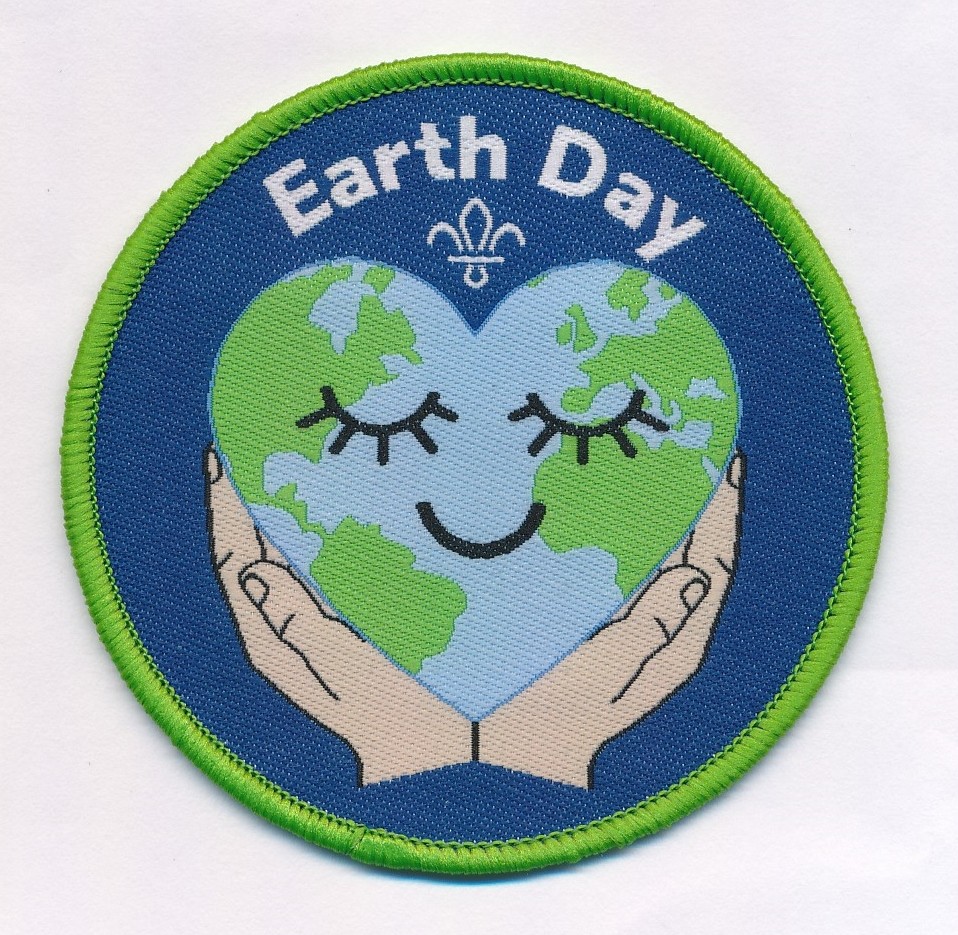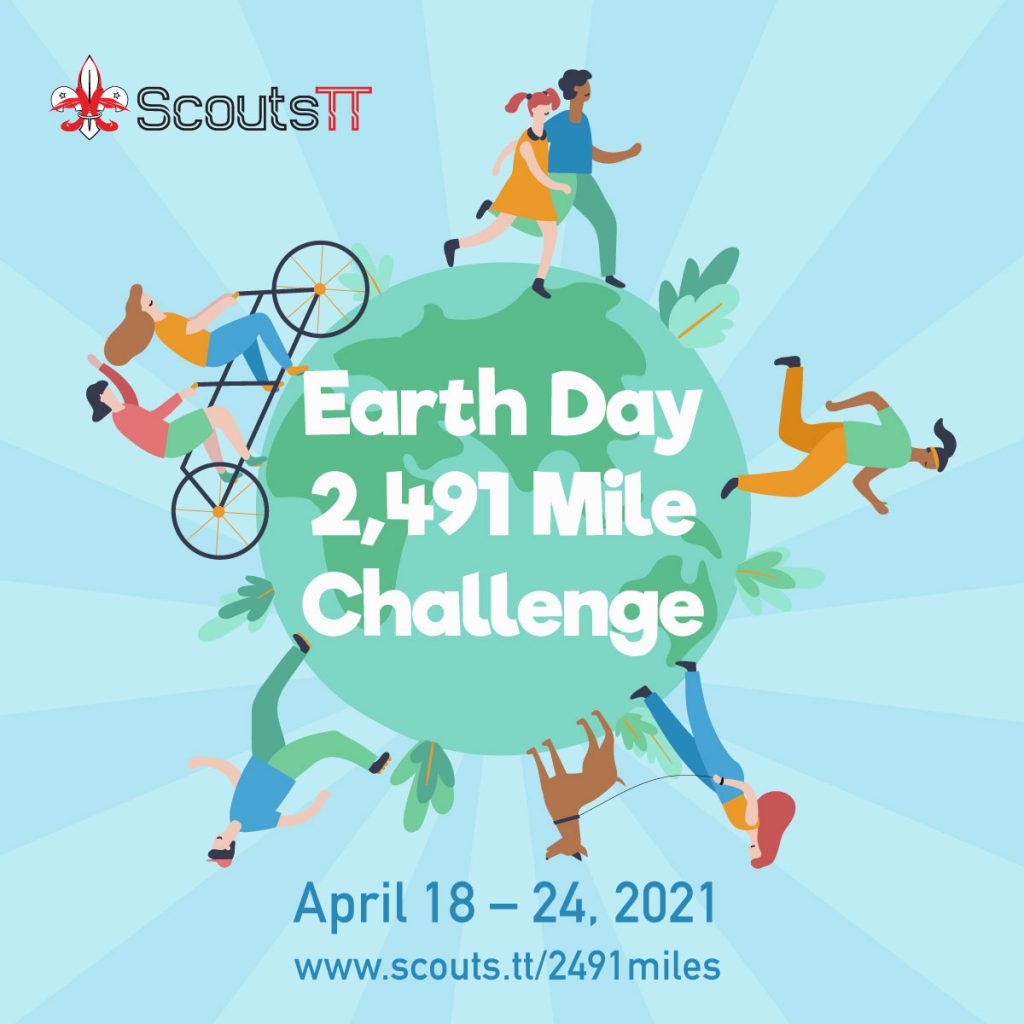Earth Day 2,491 Mile Challenge
What is Earth Day?
Earth day is celebrated on the 22nd of April every year. Since its inception in 1970, Earth Day continues to grow as a worldwide phenomenon focused on promoting clean living and a healthy, sustainable habitat for people and wildlife alike. Celebrating Earth Day serves as a conscious reminder of how fragile our planet is and how important it is to protect it. This year, it falls on a Thursday, we would therefore be making this a week long activity, from Sunday 18th – Saturday 24th April 2021.
As a Movement, ScoutsTT is challenging our members to continue being a part of our Planet Earth Pledge and cover a total of 2,491 miles (approximately 4,009 km) in commemoration of Earth Day. So far we have covered hundreds of miles for Tour de ScoutsTT and this week we are hoping to push the Planet Earth Pledge to our next milestone.
How do I take the Planet Earth Pledge?
- Share the activity and get at least three friends (or family) to participate with you as a team in this pledge as well as some of or all of the other games and activities
- Go outdoors, hit the streets of your neighbourhood, visit your local park or jump on your bike (make sure you have all your safety gear on) and cover some distance across Trinidad and Tobago with your team. You could use an app on your smartphone or even measure your distance on Google after you’ve completed your journey.
- Tell us how many how many miles you and your team covered by filling out this form – https://forms.gle/pxac7C3AxqvWmbtT9 (if you are interested, you can also check out the section on how to get a badge to commemorate this event)
- Like or follow our ScoutsTT pages including our YouTube page and upload a picture of your distance or you riding and tag us on your page. Be sure to say why you took the pledge and why it is important to save our planet and be environmentally conscious.
What are some ideas of ways that my team can cover some miles?
For those 18 years and under Parental Guidance is mandatory. Some activities that you can do to contribute with your team are:
- Hiking
- Road Running
- Walking
- Rock Climbing
- Mountain Biking
- Road Cycling
- Obstacle Courses
(or any other human powered expedition)
Will there be any sites that I can visit with my team to cover some miles and have them registered?
Due to the latest public health measures we have decided to remove the event on Saturday morning from the Earth Day activity. Persons are still encouraged to cover distances safely at home as part of their normal fitness regimen and log it through the form.
How it works:
You can complete as many miles as you can. If you are covering distance as part of a team, each person taking part is counted separately (e.g. If ten persons cover a distance of one mile together, that means that 10 miles have been contributed). Therefore, the more persons that we have taking part, the easier it becomes and because it is Earth Day, any miles done in nature such as hiking or mountain biking will count as double. As the event progresses, we will update our mile counter to see how we are doing.
Is there a badge that I can get for Earth Day?
Yes, there is a fun badge (not a proficiency badge) that you can get to commemorate Earth Day.

To get it you need to make a payment of 40TTD per person to the following account:
Name: The Scout Association of Trinidad and Tobago
Account Number: 180248991301
Bank: Republic Bank Limited
Branch: Park Street
After you do that, you can scan or take a picture of a copy of your receipt and upload it in the relevant section of the form when you are registering your miles. Alternatively, you can visit Headquarters at St. Ann’s to pay in person. Please call before visiting the office.
Do I have to pay $40 to register for this event?
No, this is a free event and anyone can participate. The $40 fee is only if you want to get the badge.
Extra Earth Day Challenge Activities:
Want to do some more for the earth? Here are some additional activities that you can do for Earth Day. For every one that you do, work with your parent or guardian to create a post for social media to show others what they can do. Be sure to use the hashtags – #ScoutsTT #earthday2021
- Visit a historical site
- Collecting items / Souvenir (shells, stones, leaves, etc.)
- Plant a Tree or Flower
- Take note of 10 different trees and their uses
- Perform 20 jumping jacks, 10 push- ups, 10 sit- ups (human power to keep the earth turning)
- Take note of 10 different animals in your neighbourhood
- Have a Picnic
- Create art with recycled materials
- Start a seed jar (Bean in a napkin, glass/cup, water) or even make a terrarium.
- Personalized Bag for Life (Create a bag from used T- Shirts or other recycled fabric)
- Make a seed bomb- Take a pile of dirt and mix together with seeds to make a seed- bomb. Toss it in your backyard or a bucket of dirt to see what happens
Special Activity – Oil Spill Clean-up
Ventures or Rovers must partner with a Cub or a Scout at the Scout Standard Stage to complete this activity. (This may be done virtually)
Thousands of oil spills occur each year around the world. Some may be tiny and others very large. All of them though have the potential to damage fragile ecosystems. This activity gives you an idea of what is required to clean up an oil spill once it has occurred.
Making an oil spill:
- To build the ocean, fill a wide shallow vessel with 3-5 cm of water (you can use a baking dish). Add 5 drops of cooking oil to your “ocean.” This will be your oil spill.
Cleaning the oil spill:
- Your challenge is to clean up the spill. Along with the person that you are working with, decide what materials you want to use and how. You might want to compare different methods. Be prepared to try out three or four different ideas.
- Keep track of how much time it takes you to clean the spill using each one of the methods that you chose.
- Come up with a system to record the results of your clean-up so that you can compare different methods.
- To test each method, add a few more drops of oil to replace what you cleaned up. For each method, ask yourself if you were able to clean up all the oil.
Some ideas:
- Add five drops of detergent directly on the oil. Stir the water to mix the oil and detergent. Record your observations.
- One of the first things workers do after an oil spill is try to keep the oil from spreading. Experiment with ways to stop the oil from spreading. Figure out which material woks better to contain the oil.
- In most cases of oil spill clean-up, materials are used to absorb the oil. This means that the material soaks up the oil. Try a few different types of material to see which is able to absorb the oil the best.
- Things that you can try include:
- Absorbent cloths
- Paper towels
- Cotton balls
- Nylon stockings
- Dried grass
- Sand or dirt
- Newspapers
- Things that you can try include:
